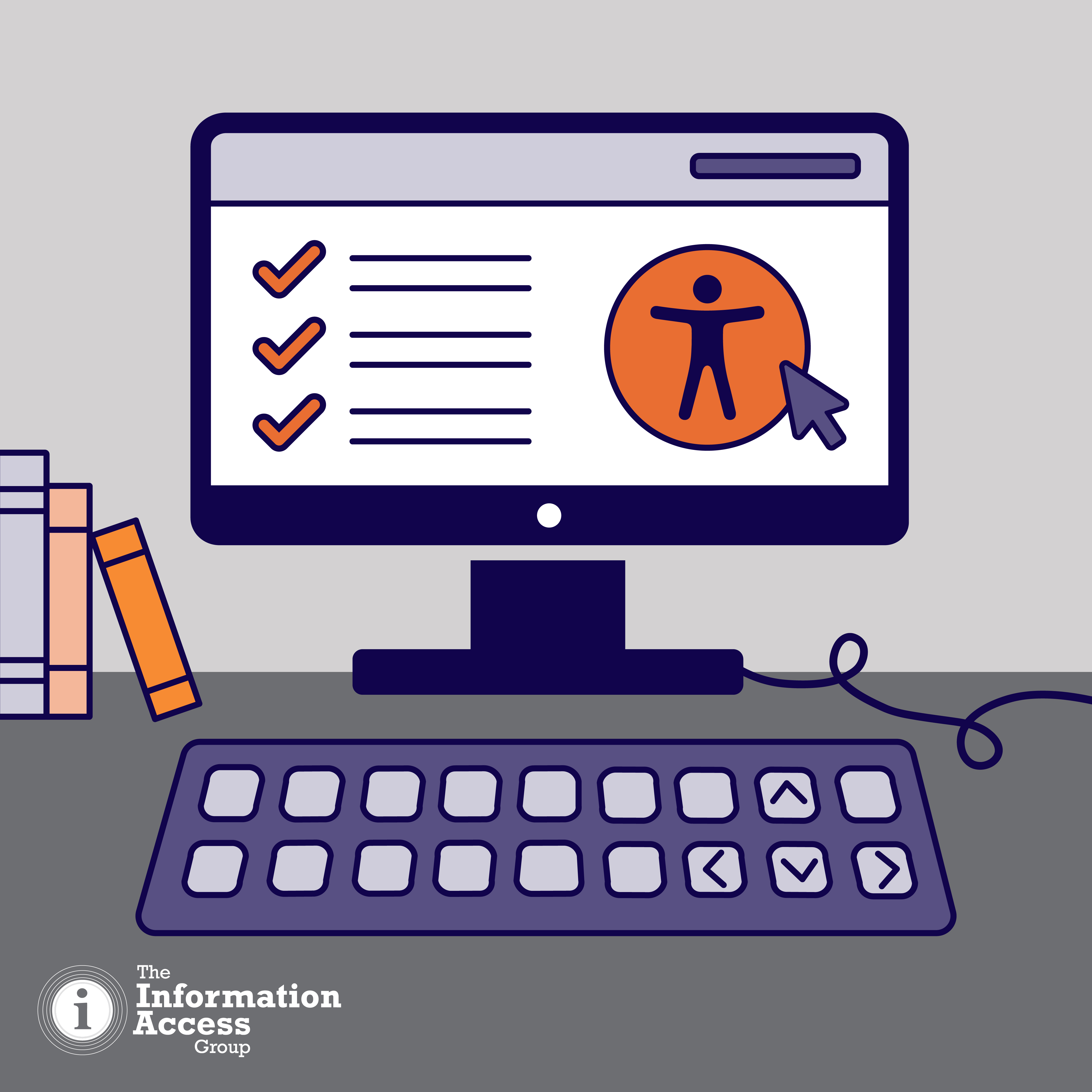
On 5 October 2023, WCAG 2.2 was published. This new version of the internationally recognised web content accessibility guidelines has new requirements to make sure websites work well for:
- people who use a keyboard to navigate
- people with cognitive disabilities.
In this article, we’ll introduce what WCAG is, cover the current Australian legal situation and introduce what is new in WCAG 2.2.
What is WCAG?
The Web Content Accessibility Guidelines (WCAG) are an internationally recognised standard that outlines how to make web content more accessible to people with disability. WCAG is published and maintained by the Web Accessibility Initiative inside the World Wide Web Consortium (W3C). The W3C are an international organisation that develop standards for open web technologies such as HTML and CSS.
The first version of WCAG, WCAG 1.0, was published in 1999.
The WCAG guidelines are broken up into 4 design principles: Perceivable, Operable, Understandable and Robust. Each of these design principles is broken up into guidelines and each guideline is broken up into individual success criteria.
The success criteria are broken up into 3 conformance levels – levels A, AA and AAA. These conformance levels build on each other: meeting level AA requires meeting all the level A criteria and all the AA criteria, while meeting level AAA requires meeting all success criteria.
You can find out more about WCAG on the W3C’s Web Accessibility Initiative website.
Isn’t WCAG 2.0 the requirement?
Under the Disability Discrimination Act 1992, WCAG version 2.0 Level AA is the set of requirements that websites developed in Australia must meet. The specific legal requirement was added in 2014 in an advisory note.
WCAG version 2.0 was published in 2008 and was followed by version 2.1 in 2018. Version 2.1 includes the same success criteria as WCAG 2.0, but added 17 new success criteria, largely focusing on making sure websites work for people using mobile devices.
While the Web Accessibility Initiative inside the W3C is always working on updating the WCAG guidelines to keep up with changes in technology, accessibility legislation lags behind by a few years. However, in 2022 work commenced to update the Disability Discrimination Act advisory note to match the latest version of WCAG.
With the different versions of WCAG, you may be wondering which version you should be trying to meet. Here are some tips:
- If you are focusing on legal compliance, then WCAG 2.0 is the minimum set of requirements that your website needs
to meet. - If you want to make sure your website is accessible for users across desktop and mobile devices, then WCAG 2.1 is a good baseline for accessibility.
- If you want to make sure your website works well for people with cognitive disabilities, and you are keen to follow the latest best practices, WCAG 2.2 is for you.
It’s worth noting that the WCAG standard isn’t the only way to test whether your website is accessible. It’s possible for a website to conform with the WCAG requirements but still offer a poor user experience to people with disability. WCAG needs to be a part of a bigger strategy to make your website or service accessible for everyone.
You can find out more about Australian accessibility legislation on the Centre for Accessibility website.
What’s new in WCAG 2.2?
WCAG 2.2 adds 9 new success criteria to the previous criteria included in WCAG 2.1. To summarise, these new requirements cover making sure:
- the keyboard focus indicator is not obscured by items like ‘sticky’ headers or banners
- the keyboard focus indicator is big enough and has enough colour contrast
- that when there is functionality that allows the user to drag and drop content, there is an easier way to do that function,
for example up and down buttons to reorder items in a list - clickable targets, for example links and buttons, are big enough and have enough space around them to avoid
accidental clicks - that if help functions are available on multiple webpages, they appear in the same place
- web forms do not ask for the same information twice in the same session
- when logging into a website:
- if there is a cognitive function test to check whether the user is a human, the user has an alternative way to log in
- the website does not stop the user from copying and pasting in their login details, or from a password manager automatically filling in the user’s details.
WCAG 2.2 also makes an existing success criterion obsolete. In WCAG 2.0, 4.1.1 Parsing was introduced. Parsing is the act of reading the structure of a website’s code. This was introduced in a time when screen reader software directly parsed the HTML content of a webpage in order to read it aloud. This meant that syntax errors in the HTML code could cause issues for screen reader software. Modern web browsers work differently in that they present an ‘accessibility tree’ of elements to the screen reader software, so the 4.1.1 Parsing success criterion is no longer needed.
You can find out more about these changes in the W3C’s What’s new in WCAG 2.2 article.


